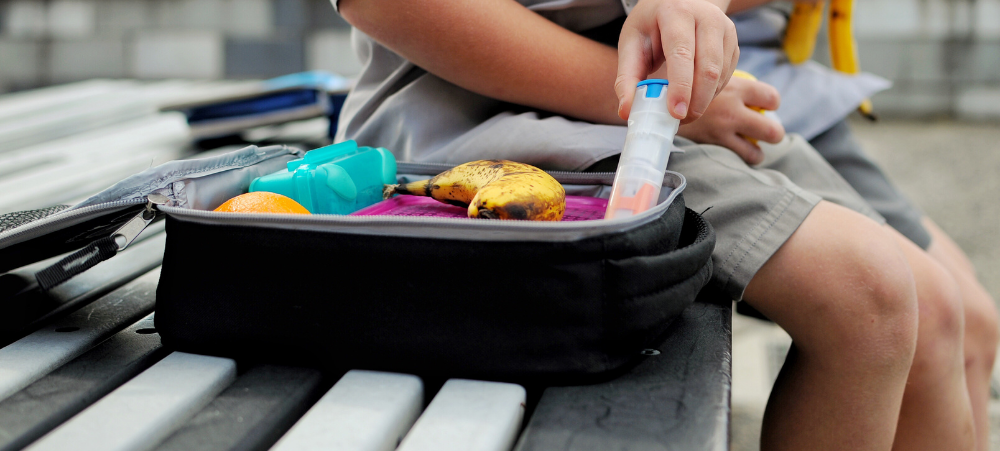This is an excerpt from my book ‘Mila’s Meals: The Beginning & The Basics’ I’m talking about egg yolk, ghee, flaxseed oil, coconut oil, hemp seed oil, olive oil, sauerkraut liquid, kefir, cinnamon, nutmeg, clove, vanilla, ginger, cardamom, allspice, turmeric, broth, dulse, liver, blackstrap molasses, baobab, cacao, hemp, lucuma, maca, moringa. It is important for me to make every mouthful of food that Mila swallows as nutritious as possible because: Good nutrition is so important at this stage of life Only a small amount of food is going to go in (at the beginning for some, or forever like with Mila) And because a lot of food is going to be turned away or spat out when the toddler emerges… So I developed a list of ‘nutrient enhancers’ – nutrient-dense foods which can be added to almost any purée or meal without significantly changing the taste, texture or appearance… because trust me… there is no greater food detective than an 18-month old! An excellent example of where nutrient enhancers shine their bright light is in the preparation of plain noodles. “Plain noodles?” I can hear you exclaim! Trust me, there will come a time when your toddler will only want to eat plain noodles, repeatedly, for months on end – and you will make them for her… because you need to choose your battles wisely, because it is the end of a long day, because you have another baby to take care of or because you are tired! So this is as plain as Mila’s plain noodles got: I cooked the gluten-free noodles in bone broth with some seaweed (wakame or kombu). Once cooked, I stirred in a raw egg yolk, some coconut oil, a pinch of sea salt and a sprinkle of dulse. Ta da! Plain noodles… that were eaten with glee! Get creative… there is no end to how sneaky you can be! Nutrient Enhancer: Why is it valuable? Eggs Eggs are a source of high-quality protein and have all the B vitamins (including vitamins B1, B2, B3, B5, B6, B12), as well as choline, biotin, folate and cholesterol, selenium, iodine, omega-3 fatty acids, vitamins A, D and E. Avoid the egg whites for your little one’s first year as these contain difficult-to-digest proteins and are what usually cause an allergic reaction. Egg yolks should be softly cooked in the beginning, but from 1 year of age you can add them in raw. They can be blended into all plant-based purées to add fat and protein. GheeFlaxseed oilCoconut oilHemp seed oilOlive oil Adding some healthy fats to your little one’s plant-based purées and meals will aid the absorption of vitamins A, D, E and K. Healthy fats are essential for your little one’s brain development Sauerkraut liquidKefir These will supply probiotics – vital friendly gut bacteria that complete the digestion process, produce vitamins, keep pathogenic (‘bad’) bacteria in check, and support the immune system. Get my sauerkraut recipe here CinnamonNutmegCloveVanillaGingerCardamomAllSpiceTurmeric Spices are a great way to develop your little one’s flavour palette. They also have medicinal qualities and are a source of nutrients. Cinnamon is a great source of manganese, fibre, calcium, potassium, iron, zinc, magnesium and vitamin A. It is known to have antioxidant, anti-diabetic, antiseptic, local anaesthetic, anti-inflammatory, warming and anti-flatulent properties. Nutmeg is a good source of potassium, calcium, iron, manganese, vitamins A, B’s and C. It is a useful remedy for: insomnia, anxiety, nausea and vomiting, indigestion (gas) and diarrhoea as well as being anti-inflammatory and antibacterial. Cloves are a great source of manganese, vitamin K, dietary fibre, iron, magnesium and calcium. They are well known for their ability to relieve tooth and gum pain, aid digestion and provide relief from asthma and bronchitis. Vanilla has antioxidant, anti-depressant and anti-inflammatory properties. Ginger is a good source of vitamin C, magnesium, potassium, copper and manganese. It is a remedy for headaches, motion sickness, nausea, indigestion, wind, colic, cold, flu, bronchitis. Ginger tea is a useful remedy for morning sickness. It boosts the immune system and protects against bacteria and fungi. Cardamom is a great source of iron, manganese, potassium, calcium, magnesium, dietary fibre, riboflavin, niacin and vitamin C. It is used as an antiseptic, antispasmodic, carminative, digestive, diuretic, expectorant, stimulant and tonic. It is a remedy for sore throats, constipation, indigestion and colic. Allspice has a good amounts of potassium, manganese, iron, copper, selenium, magnesium, vitamin A, vitamin B6, riboflavin, niacin and vitamin C. It has antiinflammatory, warming and soothing and anti-flatulent properties and is known to aid digestion. Turmeric is a powerful anti-inflammatory and antioxidant and an excellent source of iron, manganese, vitamin B6, dietary fibre, potassium, vitamin C and magnesium Broth Instead of using water to thin a purée or to cook the vegetables in, use bone broth. Bone broth: builds a healthy gut and digestion aids muscle repair and growth fights inflammation creates a balanced nervous system and a strong immune system inhibits infection caused by cold and flu viruses helps protein and mineral absorption promotes strong, healthy bones It is a source of calcium, magnesium, phosphorus, sulphur, boron, zinc, peptides (healing amino acids and natural antibiotics), collagen, omega-9s, iron, vitamin B6 and B12. All the nutrients are easily absorbed by your little one’s body (bio-available). Get the bone broth recipe here Dulse Dulse is an excellent source of calcium, potassium and vitamin B12 – making it a useful addition to any dairy-free or vegan diet. It is also a great source of protein, vitamins B6 and A, iron, phosphorus, manganese and iodine. Sprinkle dulse flakes into purées, or other meals. Liver Liver is an excellent source of high quality protein, omega-3 fatty acids, vitamin B complex (including choline, B12 and folate), a highly bio-available form of iron, vitamin D, vitamin E, pre-formed vitamin A (retinol), vitamin K2, various amino acids and trace minerals such as copper, zinc, chromium and cholesterol. A small amount (1 teaspoon) of raw liver can be grated into any purée. The liver must be frozen for 2 weeks before using it raw (fourteen days will ensure the elimination of pathogens and parasites). Alternatively add some Chicken Liver pâté into purées of other meals. Blackstrap molasses Blackstrap molasses is one way to boost your little one’s iron intake. Its other nutrients include manganese,



































